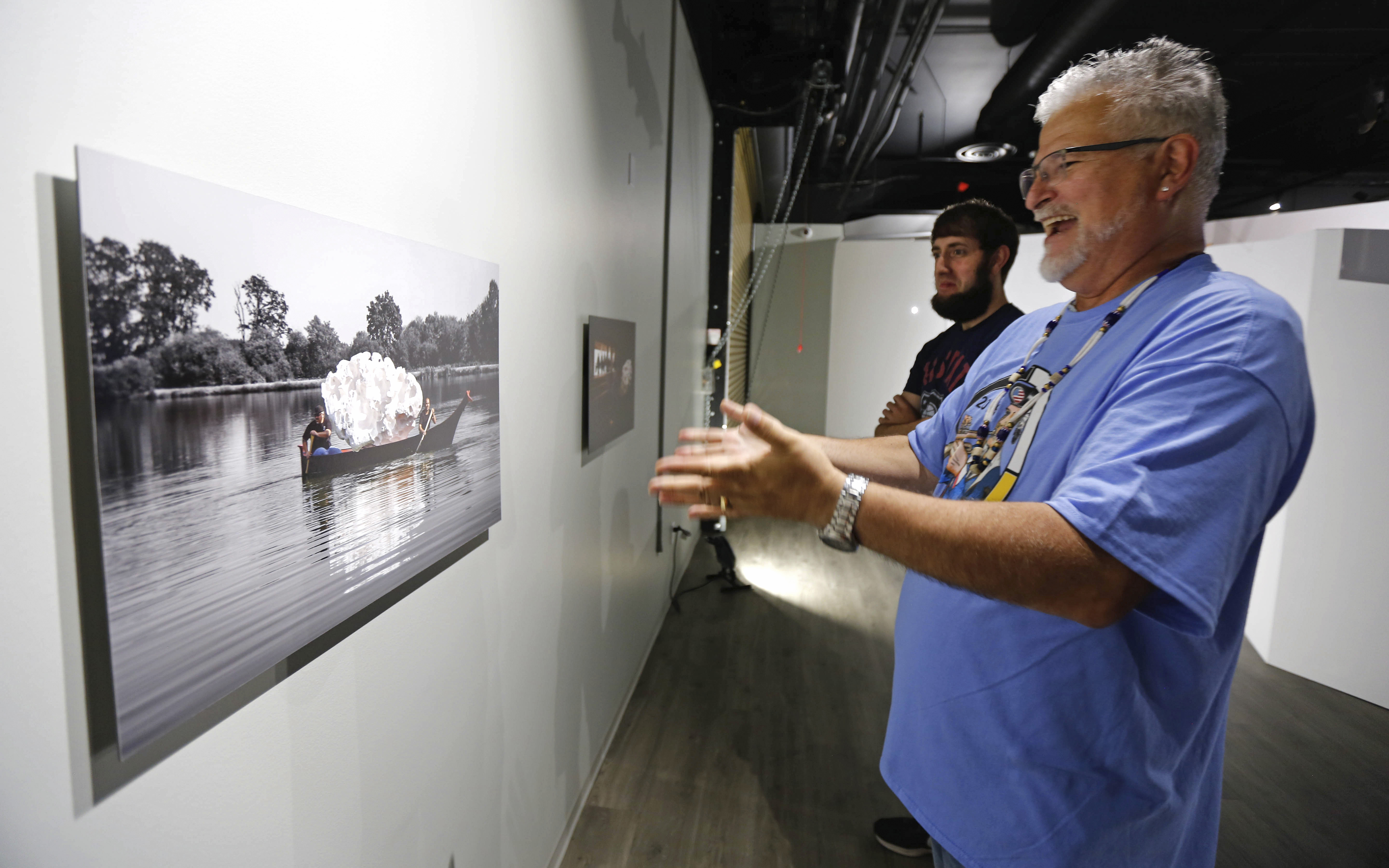Culture
New Chachalu exhibit bears "Witness" to Tomanowos

By Danielle Frost
Smoke Signals staff writer
The Tribe’s new exhibit “Witness” seeks to explain why the sacred meteorite Tomanowos is a part of everyone’s history.
It explores the multi-faceted past of Tomanowos, also known as the Willamette Meteorite, from its galactic origins to its relocation to the American Museum of Natural History in New York City to its effect on the Tribe’s cultural identity.
“We wanted the opportunity to share who Tomanowos is to us, and as a witness to all of our history,” Cultural Center Specialist Rachelle Kellogg said. “Tomanowos was a witness to the creation of this area.”
Cultural Resources staff members who designed the exhibit and featured artist Garrick Imatani joined community members, employees and Tribal members for the grand opening on Friday, July 12. Tribal Council Secretary Jon A. George attended.
“This is a multi-faceted approach to Tomanowos,” Tribal Interpretive Coordinator Travis Stewart said. “We start with the historical context and get people started thinking about it as something important as it holds the story to all of us.”
“Witness” will be on display through September 2019. Stewart, Interpretive Graphic Specialist Teal Reibach and other Cultural Resources staff have been working on parts of the exhibit for the past four years. They were joined by Imatani, who added his vision of Tomanowos called “The Drift,” a multi-part installation that invokes the story of the meteorite drifting down the Willamette Valley during glacial flooding 13,000 years ago.
Multi-media artist Imatani heard the story of the famous meteorite in 2016 and called the Tribe for permission to tell its story. That led to an introduction to Stewart and Chachalu Manager Julie Brown.
Imatani worked with Stewart and Grand Ronde students during their annual trip the American Museum of Natural History to take hundreds of photographs of Tomanowos. The photos were then converted into a 3-D scan of the meteorite, which was eventually made into a foam replica weighing approximately 110 pounds.
During the course of several days, photos were created with the replica to tell a different story of Tomanowos. It includes the replica in the forest and the Tribal plankhouse achaf-hammi, on a canoe and in a Tribal member’s pickup truck, among other local locations.
“I saw the photo series as an opportunity to show a different story of Tomanowos in images that were missing,” Imatani said. “Even though Tomanowos is not from this earth, it is fraught with the issues of colonialism in the West.”
As part of the exhibit, Imatani also created a 15-minute virtual reality film depicting Tomanowos lifting off its base inside the American Museum of Natural History in New York City and traveling westward toward its ancestral home in the Willamette Valley.
“In suggesting that an uncontrollable geological event or unexplained act of nature brings these artifacts home, ‘The Drift’ visualized the erasure of bureaucracies that often stand between collection and repatriation,” an artist statement states.
History of Tomanowos
Tomanowos is believed to be the iron core of a planetesimal that was shattered in a stellar collision and most likely landed in the southern Alberta region of Canada.
As the Columbia River Gorge was carved in a flood of water, rocks and ice, Tomanowos traveled hundreds of miles westward, eventually coming to rest outside of what is now West Linn near the Willamette River falls.
The meteorite collected water that the Clackamas Chinooks believed was invested with divine qualities. It became a sacred site for western Oregon Indian Tribes, particularly the Chinooks, who believed it was sent to Earth by the Sky People.
In 1902, Tomanowos was “found” by part-time miner Ellis Hughes, who removed it from ceded Tribal land that then belonged to Oregon Iron and Steel Co. In 1905, by judicial order, Tomanowos was returned to Oregon Iron and Steel and was subsequently purchased by New York philanthropist Mrs. William Dodge for $20,600 after she saw it at the 1905 Lewis and Clark Exposition in Portland. She then donated to the American Museum of Natural History.
In 1999, the Tribe, citing the Native American Graves Protection and Repatriation Act, sought return of Tomanowos. The museum countersued, asking a judge to declare it the owner. In 2000, the two sides reached an agreement. Every year, the museum closes early one day to allow for a Tribal ceremony. Additionally, the museum also established a Tribal youth internship program.
Using varied media to tell a story
In addition to the virtual reality film and photographs, the exhibit also includes objects on loan from multiple institutions, a virtual reality experience where a viewer can put on goggles and interact with the meteorite, a foam replica of Tomanowos and a video of visitors to the meteorite at the American Museum of Natural History.
“Witness” incorporates the history of Tomanowos so those who are unfamiliar with it have the opportunity to learn more about the meteorite’s significance.
As museum visitors enter the main exhibit room, they can peer into a small display area made to replicate a 1990s-era living room, complete with recordings of news coverage during the Tribe’s lawsuit against the American Museum of Natural History. Local news stations and those in New York City covered the story.
Tribal Elder Debi Anderson has never seen the meteorite in person, so the exhibit was the next closest thing.
“It’s so cool,” she said. “I love all of the photos of the meteorite. It is amazing. The video from New York is really neat as well.”
“Witness” will be on display during regular museum hours of 10 a.m. to 4 p.m. Tuesday through Friday. For more information, call 503-879-2226.
